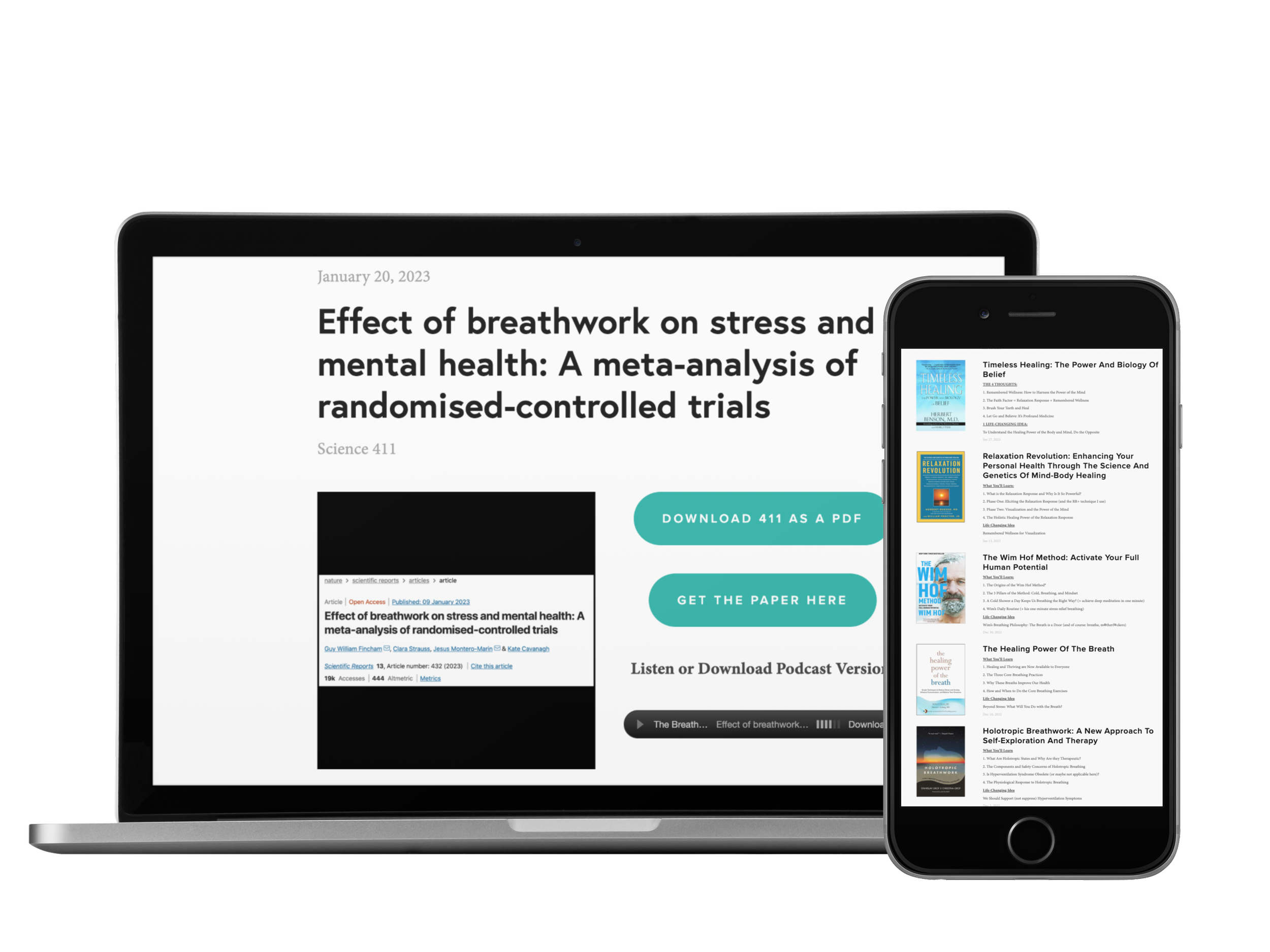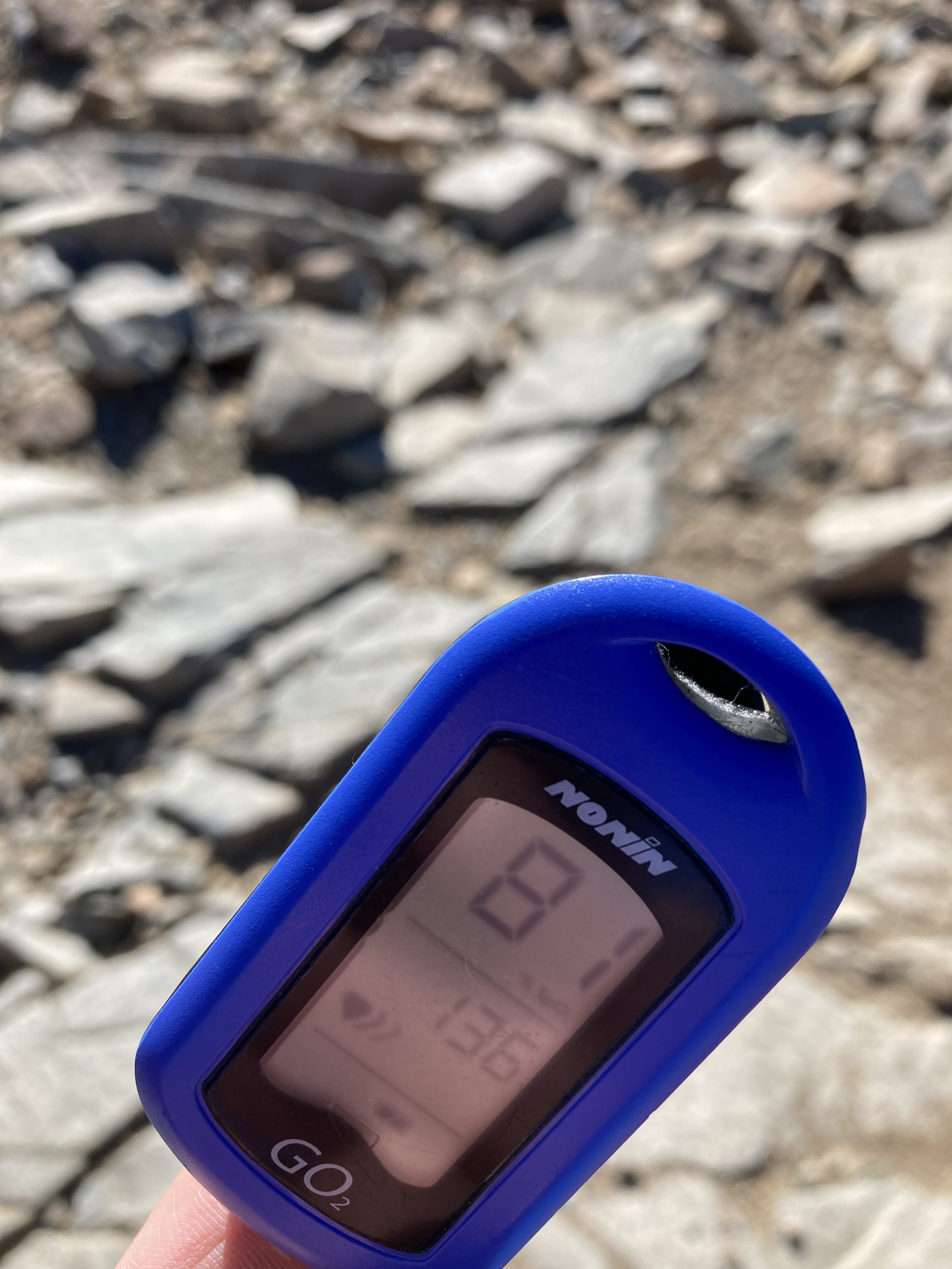Listen Instead of Reading
If you enjoy listening, you can subscribe to the audio version on Spotify, Apple Podcasts, and Audible so you don’t even have to look at the email 😊
Enjoy My Work?
Reading Time: 2 min 2 sec
I hope the next 30’ish breaths are the most nourishing of your day.
4 THOUGHTS
1. Tickle Your Adrenals with this Therapeutic Breathing Exercise
“In the body, laughter serves an important purpose. It quite literally tickles the adrenals. The diaphragm is located just above the adrenal glands, which house our reactivity, our fear and anger, our apathy and hatred. When we laugh, we flex and release the diaphragm. This gives a light jiggle to the adrenals that I think of as a tickle. … In my experience, the adrenals are often quite relieved by the invitation to relax and let go.”
– Gladys McGarey, MD, The Well-Lived Life
This is your friendly reminder to laugh and “tickle your adrenals” today. Laughter is, after all, the most therapeutic breathing exercise 😊
2. Becoming More Human, Not Superhuman
“It’s very intuitive: If we breathe better…we can deliver more oxygen to our muscles and organs, including the heart and brain, and thus heighten our physical capacity. All we’re really doing is assisting the body in working the way it was meant to work in the first place.”
– Patrick McKeown, The Oxygen Advantage
That’s a great reminder that breathing (and other mind-body practices) are not hacks to boost our health to superhuman levels. They’re simply “assisting the body in working the way it was meant to work in the first place.”
We’re becoming more human, not superhuman.
3. A Mind-Blowing Study on Sleep: Is It All in Your Head?
Of course, sleep is critical to health, and if this study was performed over a long duration, its results would likely change. But this passage from Dr. Langer is an extraordinary reminder of the power of the mind:
“Our intervention was simple: We programmed a bedside clock to alter the amount of time that participants thought they had slept, irrespective of their actual sleep duration.
When the clock was sped up, such that people thought they had slept for eight hours but had slept only for five, their reaction times were quicker on an auditory psychomotor vigilance test as compared to their performance when knew they had five hours of sleep. Conversely, when people slept for eight hours but thought that they only slept for five, their performance was worse than when they had slept eight hours and thought they had slept eight hours. Clearly, our perceptions of how much we’ve slept, and not just the actual number of hours, matter.”
Here’s the link to the study. I highly encourage reading the first three sentences of the discussion 🤯
4. The Biggest Mistake in Breathing
The most common mistake in breathing is using the nose, lungs, and diaphragm, but not the heart.
1 Quote
“Everybody can be great because everybody can serve…You only need a heart full of grace. A soul generated by love.””
1 Answer
Category: The Mind
Answer: Focusing on this, which literally translates to “tool of thought” or “mind tool,” can add a touch of mindfulness (and hence additional benefits) to a slow breathing practice.
…
(Cue the Jeopardy! music.)
…
Question: What is a mantra?
In good breath,
Nick Heath, T1D, PhD
“Breathing is the compound interest of health & wellness.”
P.S. Libraries were a good start but…
Coaching
Breathing & Mindfulness 1-on-1 (I currently cannot take on new clients. But if you’re interested, please send me a message, and I’ll let you know when space opens.)
Support this Newsletter
If you enjoy getting these each week, consider donating to keep me breathing. Anything helps and is appreciated 🙏
Amazon Associate Disclosure
I’ve been recommending books for almost 6 years. Yet somehow, I just discovered that I could be an Amazon affiliate [face-palm]. In any case better late than never. Now, any Amazon link you click is an affiliate link. As an Amazon Associate, I earn from qualifying purchases. So, if you’d like to support my work, buying books through these links is helpful : )
* An asterisk by a quote indicates that I listened to this book on Audible. Therefore, the quotation might not be correct, but is my best attempt at reproducing the punctuation based on the narrator’s pace, tone, and pauses.









